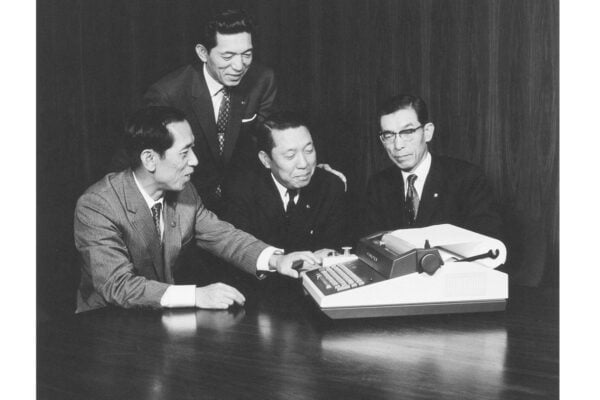A teacher’s-eye view on the benefits of graphic calculators

As part of our ongoing exploration of the benefits of graphic calculators, we recently asked James Davis, Associate Assistant Headteacher and Mathematics Teacher at Newstead Wood School, to share his thoughts and experiences with us.
James started off by highlighting some of the most immediate advantages of using a graphic calculator like the Casio fx-CG50 in the classroom. Teachers can save time by plotting graphs on the calculator rather than having to hand-draw them, for example, while students get access to a powerful learning tool that – unlike desktop graphing software or their smartphone – they can take into their exams.
But James also gave us some deeper insights into what he sees as the most compelling benefits of graphic calculators.
Investigative learning and exploration
With graphing technology in the palm of their hand, students have everything they need to embark on their own investigations of mathematical concepts and questions.
Encouraging investigative learning is something that James has used the fx-CG50 to do for a number of years.
“Function transformations is one of the things that I teach in an investigative way. Being able to see, for example, y=f(x+a) moving y=f(x) back by ‘a’ units allows students to work out the translation rule for themselves.” he explained.
“When introducing topics like differentiation, I take an investigative approach by using Table mode and displaying the x values, y values and the gradient on the graphic calculator. Then I ask students to work out the rule of d/dx(x^2)=2x or d/dx(x^3)=3x^2, or displaying y=x^n in Graph mode and exploring the gradient of a tangent using the Tangent functionality of the fx-CG50.
“It’s one of the areas where, having used the technology for a few years, I’ve adapted my teaching where appropriate.”
James went on to note that this approach immediately shows students the effects of what they’re doing and helps them grasp the underlying mathematical rules. This independent investigation and learning – as opposed to simply having things explained to them by a teacher – can help to build much deeper understanding.
Getting students engaged and excited
James highlighted trigonometric graphs as another mathematical example of the benefits of graphic calculators, noting that he will be using an fx-CG50 loan set to introduce this topic to his year 10 classes.
The usual process outlined in a textbook would be to create a table of values and plot sin, cos and tan in ten-degree steps through 360 degrees to create a smooth, freehand curve.
However, James has chosen to give his GCSE maths students access to graphic calculators and will show them how to draw a graph with the sin, cos and tan values.
“I’ll be using loan sets to do that and it’s a really nice activity to start with, because we can move really quickly,” he said. “Plotting the sin, cos and tan graphs manually would otherwise take almost an entire lesson, whereas this way we can get it done in five minutes, draw the graph and look at the symmetry properties much quicker.”
This can lead on to other investigations such as solving equations using the symmetry properties and taking a visual prompt from the graphs to work out the sin, cos and tan rules.
In a more general sense, James pointed out that introducing graphic calculators to year 10 classes can have a positive impact on classroom engagement. It makes for a nice change to students’ usual routines and gives them an exciting new tool to explore within their learning.
He recommended a minimum of one year and ideally two years’ consistent use before going into A-level exams, but he also suggested starting earlier if possible to build confidence over time.
The broad functionality of the fx-CG50 becomes fully evident when studying A-level maths, but GCSE students can also gain a lot from using the device to investigate and visualise key topics.
This is especially true for higher-ability GCSE students who are dead set on taking maths at A-level. The most ambitious and capable students will really start to see what the fx-CG50 can do in years 12 and 13, particularly if they already have some experience with it from their GCSE years.
Enhanced exam performance
When it comes to A-level and GCSE maths exam performance, James was unequivocal in his view that having access to a graphic calculator helps students achieve better results.
“If you know how to use it, there’s no question it gives you a significant advantage,” he said. “In almost every question in an A-level paper, for example, there will be some point where the graphic calculator could be of benefit.”
James also pointed out that, given the broad array of functions on a device such as the fx-CG50, students will always have plenty of tools to help them tackle the most challenging questions and problems.
“Being able to produce graphs, using equation solvers, SolveN, statistics functionality in hypothesis testing modes, the Distribution app – there really are innumerable benefits to having a graphic calculator in an exam,” he said.
To really maximise the benefits, James stressed that students need to have spent a good amount of time using their graphic calculator and getting comfortable with it.
It goes without saying that teachers have a crucial role to play in helping students gain this confidence and get used to their calculators before exams.
If you’re looking for an introduction to the fx-CG50 and some of the many things it can do, we offer free, expert-led training sessions.



